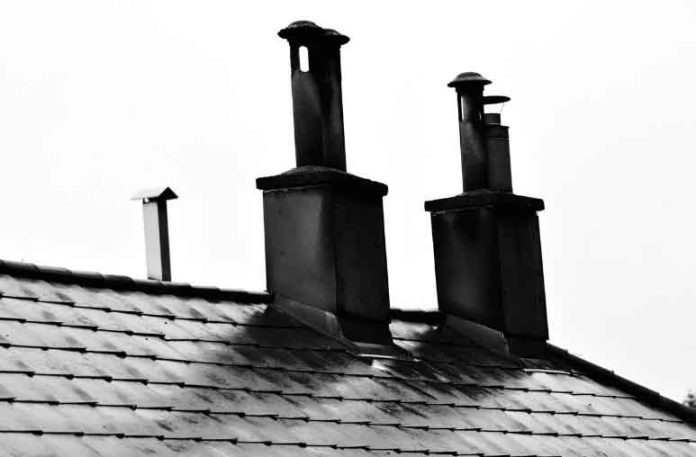If you intend to remove the chimney breast from your home, then you should know about the details regarding this process. Chimneys have a long history, and they have been used to provide warmth during the cold seasons through the centuries. The United Kingdom used to have a colder climate before the last century.
The winter used to last for more than six months. However, with each passing day, the temperature is becoming higher due to climate change. Therefore winters are not as prolonged as they used to be. The constant change in the temperature is also encouraging people to alter their lifestyles and homes.
However, the modern interior design of the homes provides a more minimal outlook. These usually include an internal heating system. Therefore there remains no particular necessity for the chimney breasts unless somebody wants to please their aesthetic sense. Moreover, some people may find it overwhelming, and getting rid of them enhances the space in the house.
Most people renovate and remove the chimney, and House Owners may also eliminate them when they put their homes on retail. The chimney breast removal costs are the same, more or less. Certain factors may impact the overall expenses. The chimney removal cost and process may depend on the labour you hire.
Chimney Breast Removal Cost In UK
The chimney stack removal process involves various aspects. Thus, you can only proceed with it when you are sure about the plan.
The cost to remove the chimney also varies according to your project. By following it strictly, you can ensure that the chimney removal cost falls into your budget.
You must initially analyse the location of your chimney breast in the house. It will determine the overall chimney breast removal cost and the process. Moreover, you must also know about the way you want to get rid of the chimney. The procedure might differ slightly depending upon the part of the chimney you want to remove.
To remove a chimney, the following are some of the typical scenarios you must consider.
- Chimney breast on ground floor
- Chimney in bedroom
- Retaining stack only
- Eliminating
- Remove the whole chimney setup
Along with these, the state of your house may also impact the chimney removal costs. The cost may increase if your home has multiple floors and the chimney stack is on top. However, the price may also differ according to the structure of your chimney.
Most chimney stacks share certain features. However, when you hire professionals, they can provide you with an accurate estimate according to your chimney breast. The materials used determine the amount of effort required to remove it effectively—moreover, the more intricate the design, the more complex and costly the process.
Moreover, the type of labour you choose also provides you different rates. They also vary with the region where you are residing. Currently, the labour costs vary between 15% to 20% across the uk.
Comparing Quotes Could Save You Upto 33%:
Following are some protocols you can follow according to your plan of chimney breast removal.
Ground floor
- If your chimney stack is situated on the ground floor, then the following process will assist you.
- Chimney breast removal from the ground floor does not require you to interfere with the stack.
- Before you begin the chimney removal process, you must assess its connection with the ceiling joists. You can proceed further if there is no association between the chimney stack and ceiling joist. If they are present, then you will have to use joist trimmers. These will provide essential support throughout the process.
- You must provide support to the ceiling. It is temporary and helps to maintain the floor position of the room directly above the ceiling. Then, you can proceed with the rest of the process.
- Thoroughly remove each brick in the chimney. This step will not interfere with the integrity or position of the ceiling.
- Now proceed to the bottom and remove the base of the breast.
- Removing the breast and hearth of the chimney stack will create a lot of mess. Collect all the debris and remove it.
- Use structural steel to hold the temporary ceiling and remove the quick support. For this purpose, you must employ a structural engineer. They will help you install the most appropriate RSJ to support the ceiling.
- Now you must seal the Flue. It is a vertical passage that directly leads to the chimney stack.
- You must add the plaster and flooring to the exposed ceilings. Add the walls and necessary boards to secure the entire area.
- Use authentic and durable material to fill up the space. Add the required amount of plaster and let it rest. Do not remove the structural support until the plaster hardens.
- Paint the wall and match it with the rest of the interior on the ground floor.
Discarding the ground floor chimney breast will require you to employ two people. You must also keep a structural engineer on board. It may also take 4 to 5 days of diligent hard work. Moreover, the total expenses will sum to around £1,800.
Comparing Quotes Could Save You Upto 33%:
Bedroom
The removal process of the bedroom chimney breast is slightly different. If it is on the ground floor, you can follow the same steps mentioned above. However, if it is on the top floors, you might have to slightly alter the procedure to make it viable.
- Similar to the ground floor chimney breast, you must ensure that the joists are not connected with the floor or ceiling of the loft. If they are present, then you must use joist trimmers.
- You must temporarily support the bedroom floor and loft ceiling with a gallows bracket. As a result, the rooms will remain situated, and you will not crumple the rest of the house structure. Moreover, you will have to remove some bricks from the chimney breast at the loft region to lace the brackets. Using the expertise of a structural engineer will help you accurately assess the points that need support.
- Once the support is set, you can move on to dismantling the chimney breast. Completely discard the bricks from the bedroom ceiling to its floor.
- Now you must secure the chimney breast in the loft as it will prevent the passage of noise and heat. Moreover, it may also accumulate excessive debris that will be difficult to remove later.
- Clean up the waste and efficiently discard it.
- Seal the openings, and add plaster and skirt board. Let the plaster dry, and remove the gallows brackets following the engineer’s advice.
- Paint the wall and embellish it according to your preferences.
The process will require two labourers and can be completed in less than three days. The expenditure for this type of chimney is estimated to be £1,500.
Leaving the Stack
In this process, you remove the entire chimney but keep the stack intact. It will remain outside your home. However, sealing the vertical opening will prevent debris accumulation.
If your house has two storeys, you’ll need to remove the chimney breast from the ground and the top floor. Therefore, you may require two labourers and a structural engineer. The process will take six days, and you might have to invest about £2300.
Eliminating the Stack
Removing the chimney stack is comparatively more manageable than the rest of the processes. Once you access the chimney stack, you can remove it from the roof by separating the bricks.
- Keep on removing the chimney stack until you reach the ground floor where the chimney breast is present.
- Remove the chimney stack from all of the storeys at your house.
- You must seal the chimney flue on the ground floor.
- Keep the chimney breast intact.
- Add plasters to fill up the space in the wall.
- You must appoint two labourers, and they can finish the partial chimney removal within a day. The total expenses will be £1500.
Comparing Quotes Could Save You Upto 33%:
Discarding the Entire Chimney Breast
- You must remove the stack and the rest of the chimney for this process. Therefore you should start working from the roof and reach the chimney breast to remove the entire chimney effectively.
- Clear off the chimney stack by removing each brick
- Afterwards, fill out the space in the roof by using plaster and other suitable materials. It will help you keep off the heat, water, dust, and other particles from the entire chimney.
- You must reach the storey directly below the rook and remove the chimney stack.
- You must add the joist trimmers if the ceiling supports the rest of the floors through the joists. You will need the help of the structural engineer to effectively place the trimmers or brackets if required.
- When you are done with the removal, there will be a lot of structural disarrangement in the ceilings and floors. Use plaster floor and wall materials to secure these places. Afterwards, you can discard the temporary supports.
- After renovating the floors and walls, you can embellish them according to the rest of the interior.
Cost and Requirements
Removing the entire chimney will require two to three labourers, depending upon your timeline and how quickly you want the job to finish. They can complete the process in seven to eight days only if they constantly work without taking multiple breaks.
In the case of three labourers, you can have the breaks and still manage to fulfil the job within this limit. You must invest around £4000 to detach the entire chimney breast.
Comparing Quotes Could Save You Upto 33%:
A Chimney Breast
A chimney breast is a region that consists of a stack and the hearth. The stack leads to the top of the house and is situated on the roof. It gathers the smoke from the hearth and releases it into the air. It is directly above the chimney flue. The Flue consists of the enriched gas and smoke which the fireplace ultimately emits.
The chimney breast occupies a vast portion of your room and is placed near the wall; however, the breast protrudes out.
Removing Chimney Breast: The Necessity
There are several reasons why people go for removing a chimney breast. Following are some of them.
Ventilation
Removing a chimney breast can help you receive an optimal amount of ventilation. Most homes constructed during the late 20th century do not have an option for the colder air to reach into the house. This causes the warmer air to remain trapped in the air pressure within the home, causing destabilisation.
The influx of the cold air promotes a neutral pressure, and it is easier to breathe the air in such places. Once you discard the chimney, you can have neutral air and ventilation in your home. You will not feel suffocated or experience difficulty in breathing by getting a fresh and warm atmosphere. Moreover, the warm air that used to reach through the stack will remain after removing a chimney breast.
Space
The chimney breast takes up significant space in your room. The old-style British homes do not already have cramped rooms. Therefore it can be challenging to adjust your furniture. As minimalist architecture becomes more popular, people prefer more house space. They can then utilise it for installing the decor.
The chimney hearth is on the front of the chimney breast, and it protrudes out with an approximate measurement of 300mm. Moreover, chimneys commonly have brick hearths. These are usually dark in colour, which causes them to seemingly occupy more space.
Maintenance
Maintaining the chimney breast can be pretty tricky. You need to clean the chimney before, during, and after each season. It may even get blocked if something is stuck into the stack.
You must also protect the stack and ensure that no bird falls into it. Bird nests are also quite common on the chimney stacks. Therefore, you must carefully remove them and place them securely.
Once you kill the fire, you need to eliminate the debris in the chimney hearth. They may even create a distinct odour in your room. In such cases, you may opt for air fresheners to keep the room atmosphere healthy.
Moreover, you need to constantly invest in getting your chimney breast cleaned. Therefore removing the chimney breast saves you from this financial burden. You can add up the costs and then rest by removing the chimney breast altogether.
Altering the Architecture
Home renovation and giving it a new outlook are among the most significant motives for removing chimney breasts. There are several replacements for chimney breasts that are prevalent in the market.
You can get a gas fireplace to replace it. These have a live fire burning with a minimal and delicate outlook. Moreover, the gas fireplace also provides an aesthetic sense to the entire interior. The electric fireplace is also quite common and may even offer the feature of different fire colours that you can switch on as you please. The electric fireplace is also more efficient and does not produce exhaust gasses.
It can heat the room more instantly than the chimney breast and other fireplaces. These are cost-effective and low maintenance, and you do not have to thoroughly clean them each season. Therefore, fireplace removal can allow you to design your home according to your preference and modern styles.
Dampness
As your chimney breast ages, chances are that it will become damp and may even get moulds. In such a case, fireplace removal becomes the most optimal solution. As your home encounters moisture and rain, it becomes wet.
Furthermore, there must be sufficient air availability to dry it. The stack can quickly get dry as they are present on the outside. However, if the vertical lining that leads to your home becomes damp, it does not get rid of the moisture instantly.
Moreover, if the ventilation in the room is inadequate, the chances for mould formation also increase. Therefore, you must carry out specific protocols to keep your chimney in pristine condition.
In some cases, you may also notice the patch formation on the chimney’s structure. If you see the distinct yellow and brown regions, chances are that the entire chimney breast has moulded. This is also a result of increasing dampness.
Fixing such chimney breasts requires a considerable investment and is quite tricky. Moreover, some moisture remains within despite the best attempts. In such scenarios, it is ideal for you to remove a chimney breast.
Crack Formation
Over time the mortar of your chimney may start to have specific gaps. These are the cracks that form due to several reasons. These include poor maintenance, accumulation of frost, and freezing temperature.
The cracks may compromise the overall integrity of the chimney breast. It may even start crumbling, and you may lose certain portions of the chimney. To rectify such damages, you need to insert plasters and bricks. However, this will not ensure that the chimney will not have cracks in the future. Therefore, removing a chimney breast is better instead than constantly mending it.
Collapsing
It is common in chimneys that use wooden designs. They use thick wood for supporting the breast and the hearth. However, these are more susceptible to damage due to increasing years and the weight to hold these parts. If your fireplace has such components, you should consider removing it.
Comparing Quotes Could Save You Upto 33%:
Factors Affecting The Costs Of Removing A Chimney Breast
Size of the Hearth
Hearth usually occupies a lot of space. These have dimensions of 330x160mm. Therefore removing them will require more hammer work. The bricks at this point are strongly associated with another. So the labourers have to exert extra effort in breaking the hearth to remove a chimney breast.
Scaffolding
Scaffolding is an important aspect that you need to remove a chimney breast optimally. If you leave the stack intact, you can put the scaffold tower on different floors as you remove a chimney breast. However, if you discard the stack, you can use external scaffolding with the help of a professional.
Heavy Load
Chimneys are one of the pieces of architecture that bear a significant load. They carry the entire stack till the breast through different storeys. Therefore they hold a lot of pressure. It is efficient to appoint a structural engineer.
They will identify the point of highest load-bearing. Afterwards, they will install the joists and brackets to temporarily hold the weight as you remove a chimney breast.
Construction Protocol
Some chimneys support joists on every floor. These will require you to add more brackets and steel supports. The older the chimney is, the deeper its role is in maintaining the house’s structure and holding the ceiling and floors.
Removal Protocols and Guidelines
There are specific guidelines and methods for removing a chimney. It is necessary to follow them before you begin the process.
- The chimneys in most houses support the ceiling and floors. In some regions, there is a unit where the chimneys are at the junction of a pair of houses. Disturbing such chimneys may interfere with the integrity of all places. Here, the Party Wall Act of 1996 is also applicable, which prevents you from interfering with the property and rights of your neighbours.
- Some mechanisms at the floor and ceiling level ensure the absence of dampness in your house. You may interrupt this process when you wreck the walls and floor to remove a chimney.
- You must also keep fire protection nearby.
- Soundproof mechanisms in the walls and ceilings are necessary when you live in a congested neighbourhood. Removing a chimney may also disturb the soundproofing.
- According to the latest guidelines, all the floors and rooms in your home must have ventilation. After removing a chimney, you must ensure that each room has ventilation of 800 mm2.
Why Should You Hire a Professional?
Removing a chimney is not a simple task. There are a lot of factors that you need to consider before you can proceed. You need a structural engineer to help you maintain the floor and ceiling support.
Moreover, you need manpower to conduct the entire process. While you can assist in removing the bricks, you cannot perform the complete removal unless you are an engineer.
Comparing Quotes Could Save You Upto 33%:
FAQs Regarding Chimneys And Its Breast Removal
1. How did chimneys originate?
Chimneys were common in all homes across the United kingdom. Despite the economic and financial status, people used to draw heat in the furious winter through chimneys. The chimneys have been around since the 1100s. In those years, they were prevalent in palaces and the homes of the lords. People built them in their individual homes in the 17th and 18th centuries.
The passage of years has only refined the architect of these breasts. However, the essence of the chimney, which includes a rigid stone wall with a fireplace in the center, remains the same in most cases.
2. Should I remove only a portion of the chimney?
No, you should not discard a portion and keep the rest. While you can either get rid of the entire chimney and keep or remove the stacks, it is not advised because of the chimney’s structure. You can also simply remove the first-floor chimney breast or the part present in the bedroom. However, you cannot discard half of the chimney.
It consists of bricks that lay in an intricate pattern. Moreover, these are tough and associated with each other. Hence if you remove a few, you will destabilise them.
3. Does full chimney demolition reduce the value of my house?
No, the chimney removal does not necessarily decrease the value of your house if you have an internal heating system and the measures to stay warm. Your home will have the same value.
However, it is essential to plaster the holes and restore the ceilings before you put the house on sale. You can also replace the chimney with an electric or gas fireplace. They will also work to improve the interior of your home.
4. Can I keep the stack and remove the rest of the chimney?
Yes, you can keep the stack intact. Masonry chimneys are part of the house structure. However, these have different components that include the stack, breast, and hearth. If you have such a chimney, you can remove the wood stove or hearth and proceed to the breast.
5. Do chimney breasts contribute to the structure?
Yes, chimney breasts are interlinked with the structural integrity of your house. Therefore the cost to remove them is also quite significant. In some cases, they are also balancing the adjacent houses. Thus, you need to follow some rules to ensure that there is minimal damage and that your neighbours’ rights remain preserved.
Concluding Note : Hire The Specialist
With the help of the experts, the entire process will become smooth and efficient. You can find the specialist at Bark.com. They will provide you insights into the chimney present in your house. Afterwards, they will analyse its structural benefits and the cost to remove and share the plan with you. If you agree with the cost of removing the chimney and the protocols, they will proceed.
Moreover, they also utilise all the essential measures for waste removal during chimney demolition. They will also ensure that none of the residents in the area suffers the consequences of this task. Bark will provide exceptional customer services, an affordable cost to remove the chimney, and a well-developed plan to maximise output.
Comparing Quotes Could Save You Upto 33%:
Disclaimer: This article contains sponsored marketing content. It is intended for promotional purposes and should not be considered as an endorsement or recommendation by our website. Readers are encouraged to conduct their own research and exercise their own judgment before making any decisions based on the information provided in this article.


































